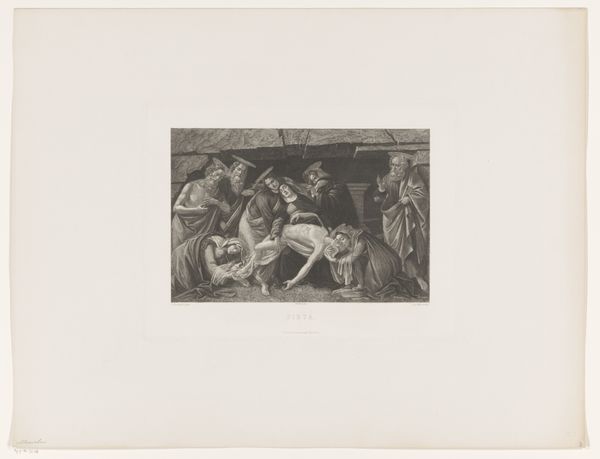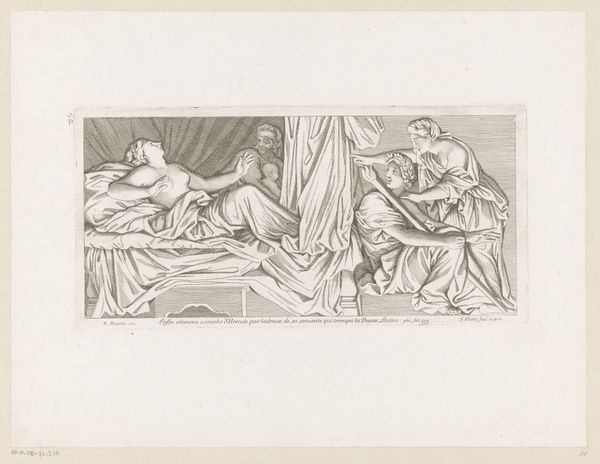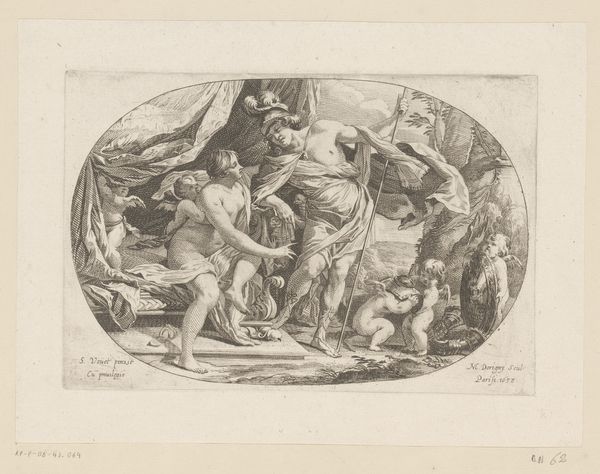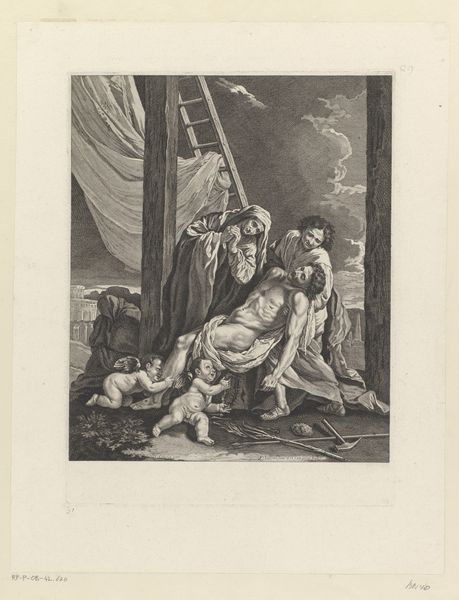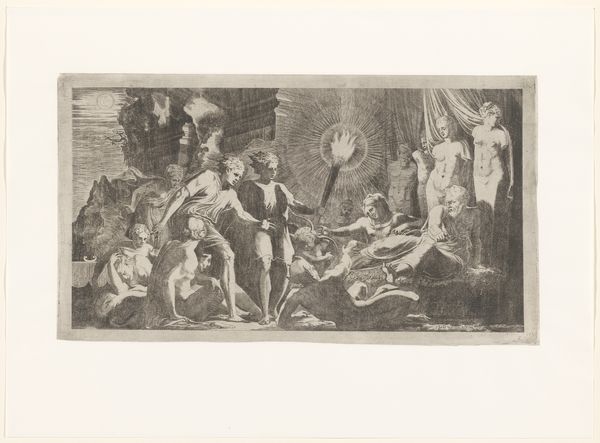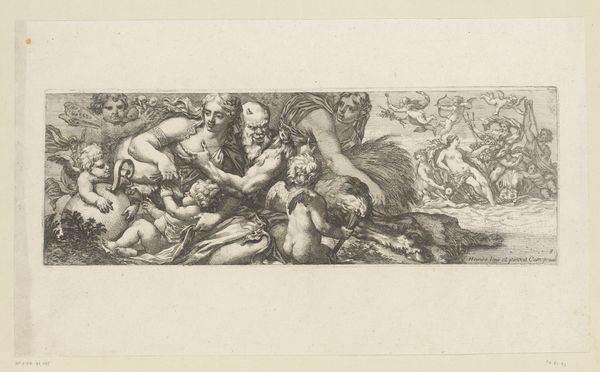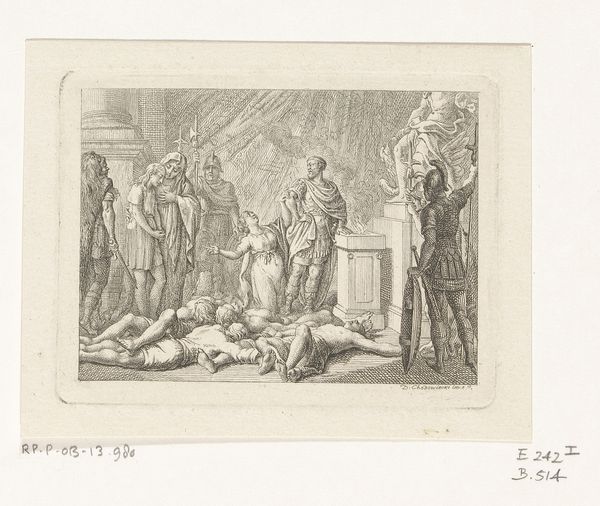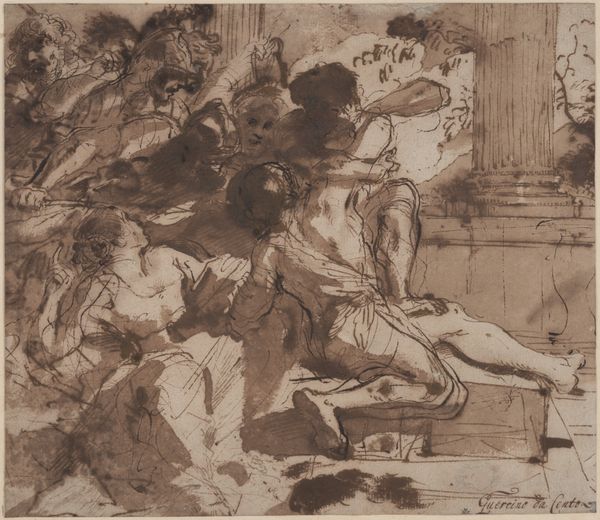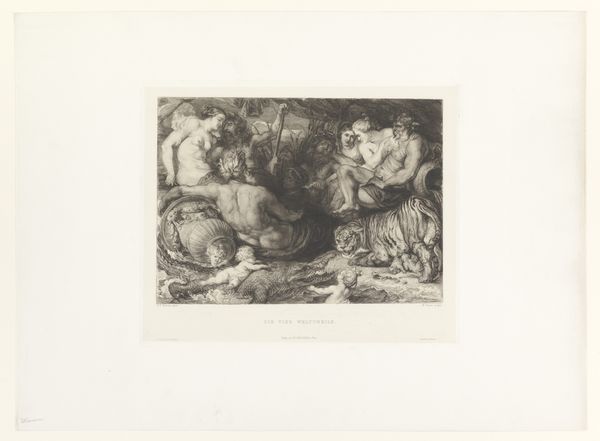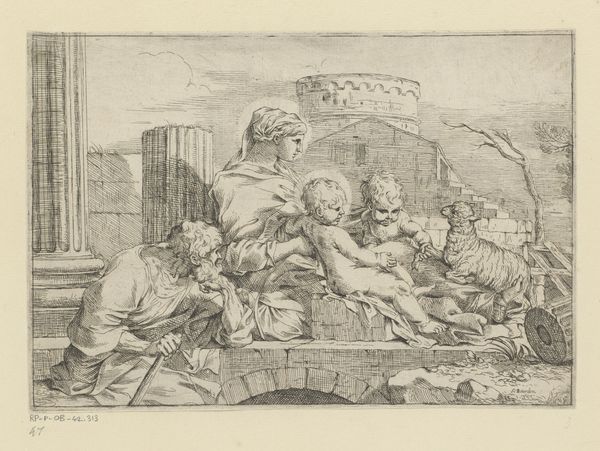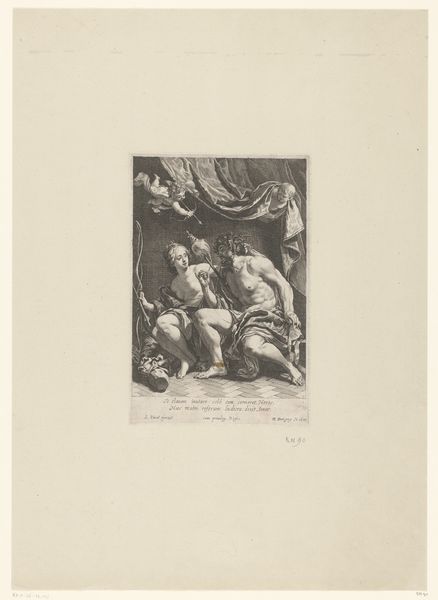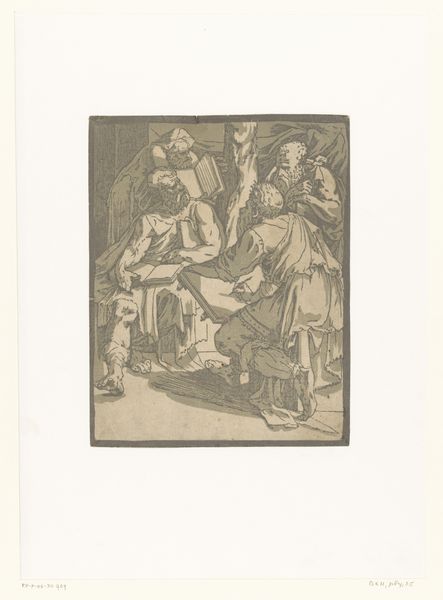
drawing, print, engraving
#
portrait
#
drawing
# print
#
figuration
#
history-painting
#
academic-art
#
engraving
Dimensions: height 154 mm, width 314 mm
Copyright: Rijks Museum: Open Domain
Editor: So, this is "Zittende jonge vrouw en putti met graveergerei," or "Seated Young Woman and Putti with Engraving Tools" by Charles Théodore Bernier, made sometime between 1881 and 1909. It's an engraving, a print on paper. The scene feels very posed, like a tableau vivant. What do you make of the classical elements here? Curator: It's fascinating how Bernier situates this work within a longer lineage of history painting, isn’t it? The putti, the draped figure of the woman—they all gesture towards the Renaissance. But instead of a grand narrative, we have something more intimate, almost like a staged genre scene. How does that tension between the historical reference and the everyday affect your reading of the image? Editor: I think it makes it feel more relatable somehow, even though the setting is clearly idealized. It's like peeking into a workshop where even mythological figures are part of the artistic process. Does the focus on engraving tools comment on art production at the time? Curator: Precisely! In the late 19th century, printmaking was undergoing significant changes, especially in its relationship to fine art. Consider how the role of reproductive prints—prints that replicated other artworks—was being re-evaluated as artists started embracing printmaking as a medium in its own right. Bernier perhaps suggests both the history of engraving as well as its potential as an avenue for modern artistic expression. What do you notice about the woman’s gaze? Editor: She doesn't look at us, which makes the image feel less engaging. She's an artist working on something perhaps? Curator: Or a model in the workshop itself? That ambiguity highlights the blurring lines between idealized forms and everyday realities. Ultimately, Bernier's choice of subject—an allegory of artmaking itself—positions his work within broader dialogues concerning artistic legacy. Editor: I hadn't considered how the piece reflects both history and contemporary debates around art. Thanks for shedding light on the socio-political aspect to his production. Curator: It's through these dialogues that we can truly start understanding an artwork's place within culture, I'm glad I could share.
Comments
No comments
Be the first to comment and join the conversation on the ultimate creative platform.
